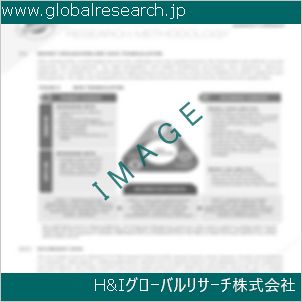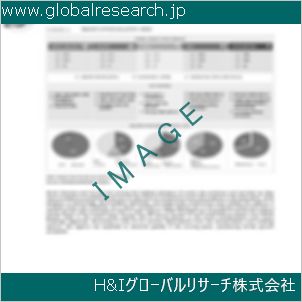Table of Contents
1 Industry Overview of BTA
1.1 Definition and Specifications of BTA
1.1.1 Definition of BTA
1.1.2 Specifications of BTA
1.2 Classification of BTA
1.3 Applications of BTA
1.3.1 Nuclear Application
1.3.2 Non-Nuclear Application
1.4 Industry Chain Structure of BTA
1.5 Industry Overview and Major Regions Status of BTA
1.5.1 Industry Overview of BTA
1.5.2 Global Major Regions Status of BTA
1.6 Industry Policy Analysis of BTA
1.7 Industry News Analysis of BTA
2 Manufacturing Cost Structure Analysis of BTA
2.1 Raw Material Suppliers and Price Analysis of BTA
2.2 Equipment Suppliers and Price Analysis of BTA
2.3 Labor Cost Analysis of BTA
2.4 Other Costs Analysis of BTA
2.5 Manufacturing Cost Structure Analysis of BTA
2.6 Manufacturing Process Analysis of BTA
3 Technical Data and Manufacturing Plants Analysis of BTA
3.1 Capacity and Commercial Production Date of Global BTA Major Manufacturers in 2023
3.2 Manufacturing Plants Distribution of Global BTA Major Manufacturers in 2023
3.3 R&D Status and Technology Source of Global BTA Major Manufacturers in 2023
3.4 Raw Materials Sources Analysis of Global BTA Major Manufacturers in 2023
4 Capacity, Production and Revenue Analysis of BTA by Regions, Types and Manufacturers
4.1 Global Capacity, Production and Revenue of BTA by Regions 2019-2024
4.2 Global and Major Regions Capacity, Production, Revenue and Growth Rate of BTA 2019-2024
4.3 Global Capacity, Production and Revenue of BTA by Types 2019-2024
4.4 Global Capacity, Production and Revenue of BTA by Manufacturers 2019-2024
5 Price, Cost, Gross and Gross Margin Analysis of BTA by Regions, Types and Manufacturers
5.1 Price, Cost, Gross and Gross Margin Analysis of BTA by Regions 2019-2024
5.2 Price, Cost, Gross and Gross Margin Analysis of BTA by Types 2019-2024
5.3 Price, Cost, Gross and Gross Margin Analysis of BTA by Manufacturers 2019-2024
6 Consumption Volume, Consumption Value and Sale Price Analysis of BTA by Regions, Types and Applications
6.1 Global Consumption Volume and Consumption Value of BTA by Regions 2019-2024
6.2 Global and Major Regions Consumption Volume, Consumption Value and Growth Rate of BTA 2019-2024
6.3 Global Consumption Volume and Consumption Value of BTA by Types 2019-2024
6.4 Global Consumption Volume and Consumption Value of BTA by Applications 2019-2024
6.5 Sale Price of BTA by Regions 2019-2024
6.6 Sale Price of BTA by Types 2019-2024
6.7 Sale Price of BTA by Applications 2019-2024
6.8 Market Share Analysis of BTA by Different Sale Price Levels
7 Supply, Import, Export and Consumption Analysis of BTA
7.1 Supply, Consumption and Gap of BTA 2019-2024
7.2 Global Capacity, Production, Price, Cost, Revenue, Supply, Import, Export and Consumption of BTA 2019-2024
7.3 USA Capacity, Production, Price, Cost, Revenue, Supply, Import, Export and Consumption of BTA 2019-2024
7.4 EU Capacity, Production, Price, Cost, Revenue, Supply, Import, Export and Consumption of BTA 2019-2024
7.5 China Capacity, Production, Price, Cost, Revenue, Supply, Import, Export and Consumption of BTA 2019-2024
7.6 Japan Capacity, Production, Price, Cost, Revenue, Supply, Import, Export and Consumption of BTA 2019-2024
8 Major Manufacturers Analysis of BTA
8.1 Manufacturer One
8.1.1 Company Profile
8.1.2 Product Picture and Specifications
8.1.2.1 Type I
8.1.2.2 Type II
8.1.2.3 Type III
8.1.3 Capacity, Production, Price, Cost, Gross and Revenue
8.1.4 Contact Information
8.2 Manufacturer Two
8.2.1 Company Profile
8.2.2 Product Picture and Specifications
8.2.2.1 Type I
8.2.2.2 Type II
8.2.2.3 Type III
8.2.3 Capacity, Production, Price, Cost, Gross and Revenue
8.2.4 Contact Information
8.3 Manufacturer Three
8.3.1 Company Profile
8.3.2 Product Picture and Specifications
8.3.2.1 Type I
8.3.2.2 Type II
8.3.2.3 Type III
8.3.3 Capacity, Production, Price, Cost, Gross and Revenue
8.3.4 Contact Information
8.4 Manufacturer Four
8.4.1 Company Profile
8.4.2 Product Picture and Specifications
8.4.2.1 Type I
8.4.2.2 Type II
8.4.2.3 Type III
8.4.3 Capacity, Production, Price, Cost, Gross and Revenue
8.4.4 Contact Information
8.5 Manufacturer Five
8.5.1 Company Profile
8.5.2 Product Picture and Specifications
8.5.2.1 Type I
8.5.2.2 Type II
8.5.2.3 Type III
8.5.3 Capacity, Production, Price, Cost, Gross and Revenue
8.5.4 Contact Information
…
9 Marketing Trader or Distributor Analysis of BTA
9.1 Marketing Channels Status of BTA
9.2 Traders or Distributors with Contact Information of BTA by Regions
9.3 Ex-work Price, Channel Price and End Buyer Price Analysis of BTA
9.4 Regional Import, Export and Trade Analysis of BTA
10 Industry Chain Analysis of BTA
10.1 Upstream Major Raw Materials Suppliers Analysis of BTA
10.1.1 Major Raw Materials Suppliers with Contact Information Analysis of BTA
10.1.2 Major Raw Materials Suppliers with Supply Volume Analysis of BTA by Regions
10.2 Upstream Major Equipment Suppliers Analysis of BTA
10.2.1 Major Equipment Suppliers with Contact Information Analysis of BTA
10.2.2 Major Equipment Suppliers with Product Pictures Analysis of BTA by Regions
10.3 Downstream Major Consumers Analysis of BTA
10.3.1 Major Consumers with Contact Information Analysis of BTA
10.3.2 Major Consumers with Consumption Volume Analysis of BTA by Regions
10.4 Supply Chain Relationship Analysis of BTA
11 Development Trend of Analysis of BTA
11.1 Capacity, Production and Revenue Forecast of BTA by Regions and Types
11.1.1 Global Capacity, Production and Revenue of BTA by Regions 2024-2029
11.1.2 Global and Major Regions Capacity, Production, Revenue and Growth Rate of BTA 2024-2029
11.1.3 Global Capacity, Production and Revenue of BTA by Types 2024-2029
11.2 Consumption Volume and Consumption Value Forecast of BTA by Regions, Types and Applications
11.2.1 Global Consumption Volume and Consumption Value of BTA by Regions 2024-2029
11.2.2 Global and Major Regions Consumption Volume, Consumption Value and Growth Rate of BTA 2024-2029
11.2.3 Global Consumption Volume and Consumption Value of BTA by Types 2024-2029
11.2.4 Global Consumption Volume and Consumption Value of BTA by Applications 2024-2029
11.3 Supply, Import, Export and Consumption Forecast of BTA
11.3.1 Supply, Consumption and Gap of BTA 2024-2029
11.3.2 Global Capacity, Production, Price, Cost, Revenue, Supply, Import, Export and Consumption of BTA 2024-2029
11.3.3 USA Capacity, Production, Price, Cost, Revenue, Supply, Import, Export and Consumption of BTA 2024-2029
11.3.4 EU Capacity, Production, Price, Cost, Revenue, Supply, Import, Export and Consumption of BTA 2024-2029
11.3.5 China Capacity, Production, Price, Cost, Revenue, Supply, Import, Export and Consumption of BTA 2024-2029
11.3.6 Japan Capacity, Production, Price, Cost, Revenue, Supply, Import, Export and Consumption of BTA 2024-2029
12 New Project Investment Feasibility Analysis of BTA
12.1 New Project SWOT Analysis of BTA
12.2 New Project Investment Feasibility Analysis of BTA
13 Conclusion of the Global BTA (CAS 95-14-7) Industry 2024 Market Research Report
| ※参考情報 BTA(BTA: Benzotriazole)は、CAS番号95-14-7で示される有機化合物であり、主に化学工業や材料科学などの分野で幅広く利用されています。この化合物は、ベンゾトリアゾールという構造を持ち、紫外線劣化防止剤や防腐剤としての特性から、様々な製品に使用されています。本稿では、BTAの定義、特徴、種類、用途、関連技術について詳しく説明します。 BTAの定義としては、BTAはベンゾトリアゾールの一種であり、化学式はC6H5N3です。この化合物は、トリアゾール環がベンゼン環に結合した構造を持っており、その特異な化学的性質から、特に金属の腐食防止剤として重要視されています。また、BTAは水に不溶であり、有機溶媒には溶解する特性を持っています。これにより、特定の環境条件下でもその効果を発揮することが可能です。 BTAの特徴としては、まずその優れた抗酸化性が挙げられます。これにより、金属表面を保護し、腐食を防ぐ役割を果たします。また、BTAは紫外線吸収剤としても知られ、UV光による劣化からプラスチックや塗料の性能を向上させる一助となります。この紫外線吸収特性は、特に外部環境にさらされる材料にとって重要です。 BTAにはいくつかの種類がありますが、主に使用されるのはホモ系列のBTAと、様々な官能基を持つ誘導体です。例えば、BTAのアルキル誘導体や、ハロゲン化誘導体などが存在します。これらの誘導体は、BTAの基礎的な特性を保持しつつ、特定の用途に応じた機能を発揮します。さらに、これらの誘導体は、主に特定の反応性を持たせるために設計されています。 BTAの用途は多岐にわたります。まず第一に、金属の腐食防止剤としての用途です。BTAは、銅やその合金の酸化を防ぐために広く使用されています。たとえば、電気機器や電子部品の製造過程において、BTAを含むコーティングを施すことで、金属部品の耐久性を著しく向上させることができます。加えて、BTAを添加したギアオイルや潤滑油も市販されており、これらは摩擦を軽減し、機械の寿命を延ばす役割を果たします。 また、BTAはプラスチックや塗料の分野でも重要な役割を果たしています。この化合物は、紫外線吸収剤として機能し、制作された製品が時間の経過とともに性能を劣化させるのを防ぎます。特に、外部環境に晒されるプラスチック製品は、UV劣化によって脆くなる可能性があるため、BTAの使用はその重要性を増しています。 さらに、BTAは防腐剤としても利用されており、特に木材や繊維の保護に役立っています。これにより、カビやバイ菌による劣化を防ぐことができ、製品の耐久性を高めることができます。例えば、木材製品が外部の湿気や害虫から守られることで、長期間にわたり使用することができます。 BTAやその誘導体に関連する技術も進化しています。最近では、BTAのナノ粒子化が研究されており、これによって表面積と反応性が大幅に向上しました。この技術は、金属の保護だけでなく、プラスチックやモルタルなどの新しい材料への応用が期待されています。さらに、BTAを基にした新しいコーティング技術は、環境に優しい製品として評価されています。 BTAの安全性についても触れておく必要があります。BTAは、適切な取り扱いのもとで利用されるべき化合物であり、過剰な暴露は健康へのリスクを伴う可能性があります。そのため、取り扱い時には防護具を着用し、適切な管理を行うことが求められます。環境への影響についても考慮が必要であり、最近ではBTAを代替するより環境に優しい物質の開発についての研究も行われています。 総じて、BTAはその特異な化学的特性と多様な用途から、多くの産業分野において不可欠な応用を持つ化合物です。特に金属の腐食防止や紫外線劣化防止の領域では、BTAの重要性はますます高まっています。今後の研究や技術開発により、BTAに関連する新しい知見や利用法がさらに広がることが期待されています。 |
❖ 免責事項 ❖
http://www.globalresearch.jp/disclaimer












